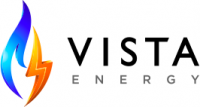6 Tips for Increasing Your Energy Efficiency During Spring Cleaning
Knock Off the Dust and Get Rid of the Clutter While Using Less Energy
Spring Cleaning might be one of our favorite times of the years, but it’s not because we actually like the “cleaning” part. It’s because spring is our favorite season. The air is warmer, the sun shines a bit more brightly, and the beautiful colors of nature begin to emerge from their winter slumber. This combination of fresh sights, sounds, and smells encourages us to revitalize our homes, from the décor and ambience to the cleanliness and organization.
To inspire your Spring Cleaning, we wanted to share some top energy efficiency tips you can put into motion with relative ease. These 6 essential recommendations will help you lower your energy usage, especially as you head into the warmer months of summer.
#1 Dust Everything
Yes, we do mean dust the old-fashioned way, and we do mean everything. Dust is one of the unseen enemies of energy efficiency, as its slow accumulation prevents proper air flow. This causes both overheating in your electronic devices and overworking with your entire Heating, Ventilation, and Air Conditioning (HVAC) system.
Thus, while you probably should still dust your baseboards, bookshelves, and other hard-to-reach places, for the purposes of energy efficiency, you should focus on the following:
- Light bulbs
- Vents (& surrounding areas)
- Electronics
- Your ceiling fans
And while you’re cleaning that fan, go ahead and switch the direction to where it blows air down into the room.
#2 Limit Your Vacuum Usage
Building off tip #1, using less electricity means finding ways to use your vacuum cleaner less. Not only do vacuum cleaners use electricity, but there isn’t an ENERGY STAR version of that appliance on the market. That being said, there are a few instances during your Spring Cleaning where you need to clean up dust and debris as effectively as possible.
- Refrigerator coils
- Shades
- Dryer lint trap
We have modern technology for a reason, but we also need to use it wisely.
#3 Wash with Cold Water
While you can use this tip every single day for the entire year, it’s important to practice it even during Spring Cleaning. With an increase in cloths used for cleaning and dusting – combined with the clothes you’re dirtying while cleaning – you have more laundry to do. Even then, you should only do your laundry when two conditions are met:
- Only full loads
- Only at night
Daytime laundry will heat up your house, which causes your air conditioner to run more than it should to cool the house. While the occasional smaller load for your delicates is understandable, you shouldn’t run half-or-lesser loads on a regular basis. Doing so increases the loads you wash, which increases the amount of electricity you use to power your washing machine and dryer.
#4 Clean with Cold Water
Much like tip #3, you should use it year-round, but you’re also using more water during Spring Cleaning, so make sure it’s cold. Along with your laundry, cold water and an eco-friendly cleaning solution work best in the following areas:
- Sinks
- Floors
- Tubs
- Counters
- Refrigerator
Yes, we’ve been taught all our lives that hot water cleans and disinfects. Which is true – but you’re also not trying to create a perfectly sterile environment in your home! Instead, you should rely upon your soap or cleaning solution for taking care of those germs. Besides, using exclusively hot water all the time keeps your water heater going full-tilt, and that definitely drives up your energy usage.
#4 Adjust Your Water Heater
Here’s a classic Spring Cleaning task: draining your water heater and removing all the sediment from the tank. Doing so will help your water heater operate more efficiently, which saves you money on your energy bill. At the same time, you should lower the temperature of your water heater to 120 degrees F. Not only is it a safer temperature for homes with kids and/or the elderly, it’s also better for your electricity bill.
#5 Replace Your Filters
In all actuality, you should replace the filters in your air conditioner and furnace at least every three months. Depending upon the brand of filter and HVAC unit in your home, this time frame varies, so be sure to read the instructions or speak to your preferred HVAC technician.
Spring Cleaning just represents an excellent time to start a fresh calendar for replacing these filters, so power up the calendar on your smartphone and set a reminder now for the next time you need to do it.
#6 Schedule an HVAC Inspection
This might be one of the most important tasks you can do during Spring Cleaning, and it’s essential to improving the overall energy efficiency of your home. Having a licensed professional inspect your entire HVAC system will ensure your home is being cooled and heated as effectively as possible, which goes a long way toward lowering your overall energy usage and costs.
Spring is a great time for HVAC inspections because you’re checking your unit for problems before the heat of summer arrives. Also, since most people wait until either summer or something goes wrong to get their HVAC checked, you’re securing a lower price from an HVAC technician by getting a spring inspection.
Good luck with your Spring Cleaning this year! We hope our 6 energy efficiency tips will make the entire process more successful and lead to lower energy bills in the coming months.
Have Questions? Call Us!
Our representatives are waiting to help you Mon - Fri 7:00 am to 6:00 pm CST
Sat 10:00 am to 3:00 pm CST
